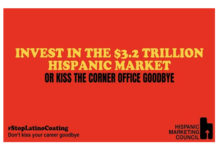Although many companies around the globe have made earnest, and often specific commitments to environmental, social and governance (ESG) goals, many are struggling to meet them, revealed a new study.
In many cases the gap between a company’s ESG aspirations and the ability to execute on them is significant, confirmed Global Corporate Sustainability Survey 2022, carried out by global strategy consultancy LEK Consulting in conjunction with Longitude. Among the barriers they face are divisions within the leadership team over how to balance short-term business and financial priorities with long-term ESG objectives; lack of processes and capabilities to build ESG programmes; disconnects in strategy, product and service portfolios and supply chains; and internal cultures that are out of alignment.
Aligning incentives and creating executive remuneration programmes to support ESG is another significant challenge, confirmed the major survey of 400 C-Suite executives in the US, Europe and Asia. Designing and executing effective ESG programmes will require major rethinking of all these barriers and issues; especially, greater internal consensus on the tradeoffs ESG and sustainability objectives require, noted the study.
“Companies are willing, for very sound business and societal reasons, to become more sustainable, but they’re not fully ready, and far from able at a senior executive and board level, to deliver against those ambitions,” shared John Goddard, Partner and Vice Chair of Sustainability at LEK Consulting.

ESG COMMITMENTS
Sustainability and ESG have significant momentum in the private sector. More than 700 of the largest 2,000 publicly traded companies have claimed net-zero commitments. Around 60% of the FTSE 100 have committed to net zero by 2050. And two-thirds of the S&P 500 have emission reduction targets.
Most companies with ESG commitments see them as far more than just ways to be compliant and reduce certain risks. According to the survey, 51% of organisations are approaching ESG as a growth driver. A further 20% focus on it in the context of innovation.
In fact, 51% of executives agree that their company should address ESG issues; even if doing so reduces short-term financial performance. Around 54% of executives from publicly listed companies confirm this position. “The most enlightened companies are driving themselves toward clear sustainability goals, as opposed to being purely compliance focused. They know it is best for the business, best for the planet and best for society,” Goddard noted.
SIGNIFICANT ESG CHALLENGES
Yet companies must overcome a fundamental challenge before meeting ESG goals. This revolves around achieving internal consensus on handling the tension between short-term priorities and investments for sustainable growth.
Indeed, 58% of executives said there are “significant differences of opinion within the leadership team” on balancing short-term priorities with long-term ESG goals. “Analysing financial and non-financial benefits of the strategic choices to achieve ESG goals is a tall order. It means quantifying non-financial benefits in a way that allows for careful strategic choices to engage fully in ESG,” Goddard said.
Aligning is also difficult because of the range and complexity of the risks associated with ESG and sustainability. The report highlighted the key ESG risks facing organisations, which include:
- The cost of energy transition, supply chain sustainability commitments and regulatory compliance.
- Finance-related areas. This includes stranded assets with lowered value, ESG ratings, which are yet not standardised nor consistent, and pressure from activist investors.
- Reputation-related, including consumers’ increasing sophistication, “cancel culture” targeting corporations.
- Talent and retention issues related to perceptions of about a company’s ESG stature.
SUSTAINABILITY RISKS
“Boards and executives are increasingly aware of the major sustainability risks, but they often lack the full context, characteristics and tools to advise and make decisions to manage them,” Goddard said.
Part of the challenge is the lack of metrics or key performance indicators (KPIs) to track progress toward ESG goals. Only a quarter (27%) of companies have any enterprise wide ESG KPIs in place. Even fewer still have a full set in place (just 3%), according to the survey.
Without such metrics, companies will continue to struggle to align executive remuneration with ESG targets. “Company leaders acknowledge that linking executive compensation to sustainability targets will be a key step in achieving ESG goal, but too few companies are at this point yet,” Goddard said.

OTHER ESG HURDLES
The survey asked executives to select those challenges that may be affecting their ability to achieve their sustainability goal. Around 34% selected “lack of strategic alignment across key stakeholders”. About 33% selected “leadership team unaligned on what ESG ambition should be”. Around 33% selected “lack of relevant capabilities/skills for clear decision-making and accountability”. Another 33% selected “lack of the right culture/mindset”.
When asked to select key areas where their organisation is least prepared to deliver on ESG goals, 43% selected “reward and incentives frameworks”. Another 40% said “the right culture, including tone and engagement from the top.” Other key findings revealed that:
- 79% of executives said the organisation has more to do to put the required skills and capabilities in place to deliver sustainability goals.
- 59% said their company has not made substantial progress in understanding the financial risk and financial opportunity posed by climate.
- 54% said their company has not made significant strides in integrating ESG factors into the way the company allocates capital.
- 48% said they do not think their company’s current product and service portfolio meets the needs of a more sustainable future.
RECOMMENDATIONS
“There are a number of avenues organisations can take to overcome barriers to deliver on ESG goals,” Goddard said. “They involve establishing a common language with which to develop sustainability goals and begin to understand the strategic choices required to achieve the goals; investing in educational programs and support; engaging the full leadership team in analysing the financial and non-financial strategic choices that might be involved in achieving ESG goals; begin to set measurable goals in order to set KPIs and enable reporting and tracking, and putting in place interim targets so remuneration can be linked to ESG strides.”
Click here to download the report.




































